Transposition is essential skill for any aspiring musician. At their heart of it, transposition allows you to alter music so that it can be played on different instruments or in different ranges of pitch.
So let’s take a dive into how to transpose down an octave, both for music theory students and for musicians seeking to understand the concept of transposition
Need to transpose using another interval; check out all our transposition guides here.
What is an octave?
An octave simply means eight notes. How many sides does an OCTagon have?! Eight!

Now in the last blog post, we practised keeping the note the same between the clefs, before we looked at moving up an octave. This is an extremely important skill as it makes it a lot easier to transpose up and down between the clefs. Quickly, let’s first look at putting middle C into our various clefs just to remind ourselves what this looks like.

We need to be clear where middle C is in all of our clefs. This is vital if you are to keep the note the same or transpose up and down an octave in different clefs.
Let’s just check we can put the below bass clef note in each clef so it sounds the same. Which note do we have?
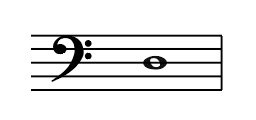
We have a D below middle C. Let’s put this now into our other three clefs…

If you are happy with keeping the notes the same let’s now practice moving our notes down an octave.
As before with up an octave, first practice transposing the note down an octave (eight notes) within the same clef.
Which note do we have below?

That’s correct, we have a D just above middle C! Let’s now take this D above middle C and transpose it down an octave to the D just below middle C!
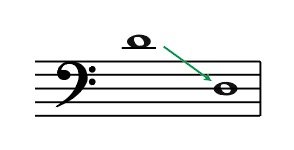
Using Different Clefs
Once you can confidently move down an octave in the same clef it is now time to see if you can take this knowledge and move this between the clefs.
Remind yourself how you took the same note into different clefs. For example, if we have middle C in the Treble clef, it would like this in all the other clefs.

One more, if we have the A above Middle C, it would look like the below in all the clefs.

Transpose Down an Octave Using Different Clefs
Now let’s apply this to transpose down an octave between the treble and bass clef.
Which note do we have below in the treble clef?
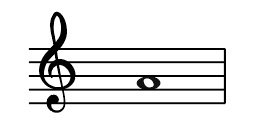
That’s correct, we have an A above middle C.
Make particular note of the fact we say ‘above middle C’. By recognising this, you can then safely say that by taking it down an octave (eight notes) you will be writing the A below middle C.
Firstly, let’s look at what this A would like in the Bass clef without transposing it.

That’s far too many ledger lines for my liking!!
Now let’s count down eight notes from here to find our A below middle C, an octave below the original note we were given in the treble clef!
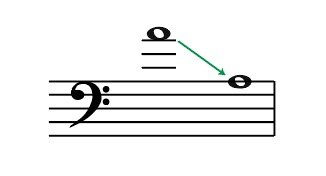
Below you will see the original note in the treble clef on the left. On the right you will see this note transposed down an octave in the Bass Clef!

Example 1
Which note do we have below in the bass clef?
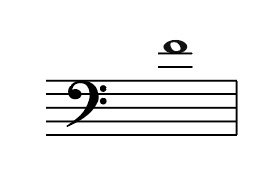
That’s correct we have a F above Middle C.
Find this F in your Treble clef (make sure it’s the same pitch!)
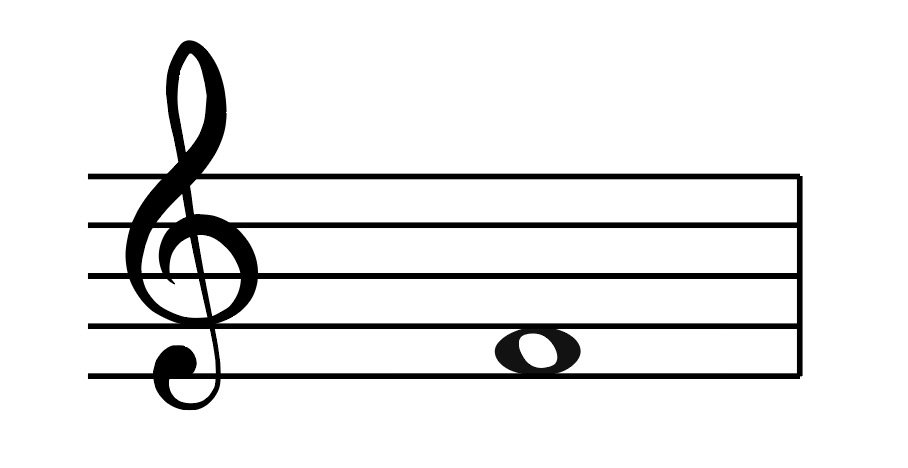
Now bring this down eight notes (octave)
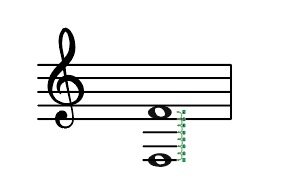
What is our final answer?
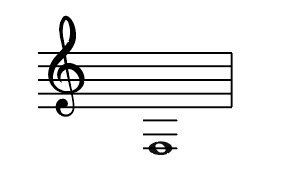
Transpose Down an Octave: Alto and Tenor Clef
Answering this question in the alto and tenor clefs is now very simple, just keep that middle C in mind.
Let’s Try!
Which note do we have in the example below in treble clef?
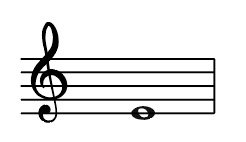
That’s correct, we have an E above middle C. Now see if you can find this same note in the Alto clef…
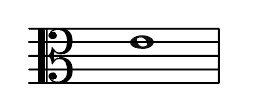
Now simply count down your octave to the E below middle C.
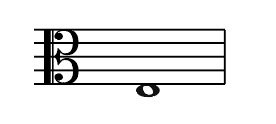
We can also do this same question in Tenor clef just as easily!
Which note do we have below in the bass clef?
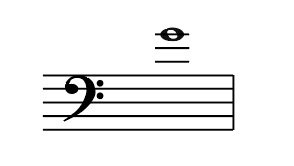
That’s correct, we have a G above middle C.
Find this note in the Tenor Clef…
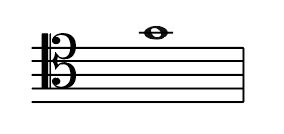
Now as before, count down your octave (eight notes).
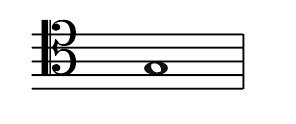
How easy is that?! The more you practice doing this the better you will get, eventually you will be able to do this much quicker!
If you have any comments or ideas, as always, let me know in the comments!
Next time we will move further on this transposition journey… watch this space!
What’s next….?
- Learn how to transpose UP an octave.
- Learn how to transpose by another interval.
- Learn more about intervals with our complete guide.
